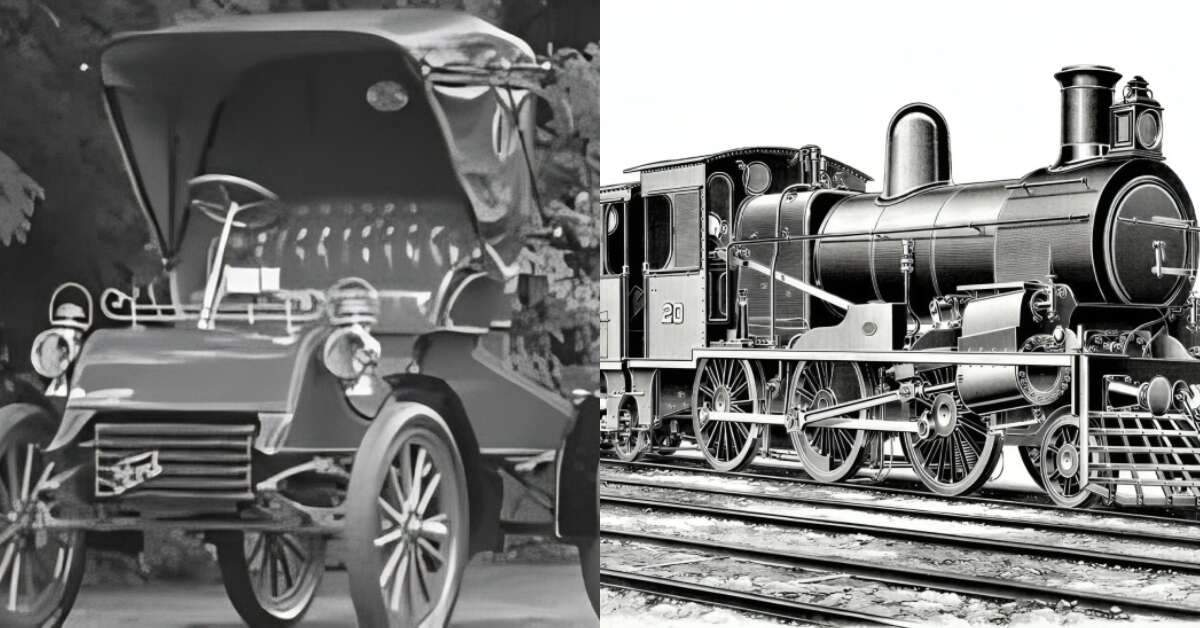

In today’s world, one cannot imagine getting anywhere without the help of modern automobiles, which are commonplace and easily available to most people. This era of speedy, efficient transport today owes a lot to the changes brought about by the Transportation Revolution of the late 1800s – but how did this movement take form in the humble city of Visakhapatnam? It began with the arrival of the city’s first trains, cars, and other automobiles, of course! These developments enriched both the city’s infrastructure and identity. Take a look at some of them.
The story of railways in India began in 1853 with the first railway line connecting Bombay and Thane. Slowly, the British extended these tracks across the country, driven by a mix of ambition and necessity—especially during famines in the 1870s when railways became a lifeline for transporting grains.
In Visakhapatnam, the East India Company’s reliance on its port and the city’s prime location between Madras and Calcutta made it an obvious choice for railway expansion.
On August 8, 1893, history was made when the first goods train arrived at Vizagapatnam station, followed by the first passenger train in 1894.
At the time, trains were a completely alien concept to locals of Telugu villages in the Madras presidency. They were dubbed “Poga Bandi” (smoking carriage) or “Agni Bandi” (fire carriage). The sight of a steam locomotive, with its loud hissing, smoke, and enormous size, sparked both fear and fascination.
To quell these fears, the administration issued pamphlets in all towns and villages which provided information about the steam locomotive.
Despite the initial fear, the train was welcomed joyously. The day of its arrival also marked the opening of the Waltair Station. Free rides were also offered to Anakapalle to the estate of Rajah Goday Gajapathi Rao, and celebrations were held at the Vizag Police Grounds!
By the early 1900s, transportation worldwide was rapidly modernising, and Vizag was no exception to this revolution. The city, once dominated by bullock carts and horse-drawn carriages, saw its first motorcar in 1904, brought in by Messrs Arbuthnot & Co of the Chittivalasa Indigo Factory. This was a Ford motorcar. Just a few years later, in 1907, Capt C Arlington of the East Coast Battalion imported the second car—a Ford Model AC.
At that time, owning a car was a luxury reserved for the elite. The Maharajahs of Bobbili, Jeypore, and Vizianagaram soon followed suit, competing to acquire the latest models for their collections. These early cars were more than just vehicles—they were status symbols, showcasing wealth and modernity. The royals used their cars to travel to the summer palaces they had built along to Vizagapatam-Bimlipatam stretch. This resulted in the financing of roads to cater to their travel.
In 1929, Visakhapatnam witnessed something extraordinary: its first aeroplane. It was a Tiger Moth biplane, flown into the city by none other than the Maharaja of Vizianagaram, who wanted to become a pilot. For the people of Vizag, the sight of an aeroplane soaring through the sky was nothing short of magical. Streets would fill with people craning their necks upward, eager to catch a glimpse of the flying machine.
But this story took a turn in 1940. During a flight over the city, the pilot—an Englishman—attempted a daring low flyover near the beach to startle a group of British women enjoying the sun. Unfortunately, he misjudged and crashed near the old lighthouse. The plane was destroyed, but the pilot survived with injuries. This marked the end of the Tiger Moth’s presence in Vizag.
Each of these innovations of the Transportation Revolution brought with it a sense of wonder, progress, and connection to Visakhapatnam. Today, as the city continues to evolve, these stories stand as a reminder of where it all started!
The information in this article has been collated from information provided by INTACH historian John Castellas, and Octogenarian Kolluru Jagannadha Rao’s book, “Vi(za)gnettes.”
Stay tuned to Yo! Vizag website and Instagram for more heritage stories.
This post was last modified on 25/11/2024 1:36 pm
Peela Srinivasa Rao has been elected as the new Mayor of the Greater Visakhapatnam Municipal…
The Visakhapatnam Police have uncovered a gang participating in a big loan app scam operation…
The search for new activities and experiences never ends. It's undoubtedly exciting to have one's…
The death of an 11-year-old girl near a church in Kancharapalem, Visakhapatnam, on the night…
Visakhapatnam district is set to see a major new development aimed at empowering the differently-abled…
A gruesome double murder in Rajeev Nagar, Ward 86, Visakhapatnam, was reported on 26 April…
Leave a Comment